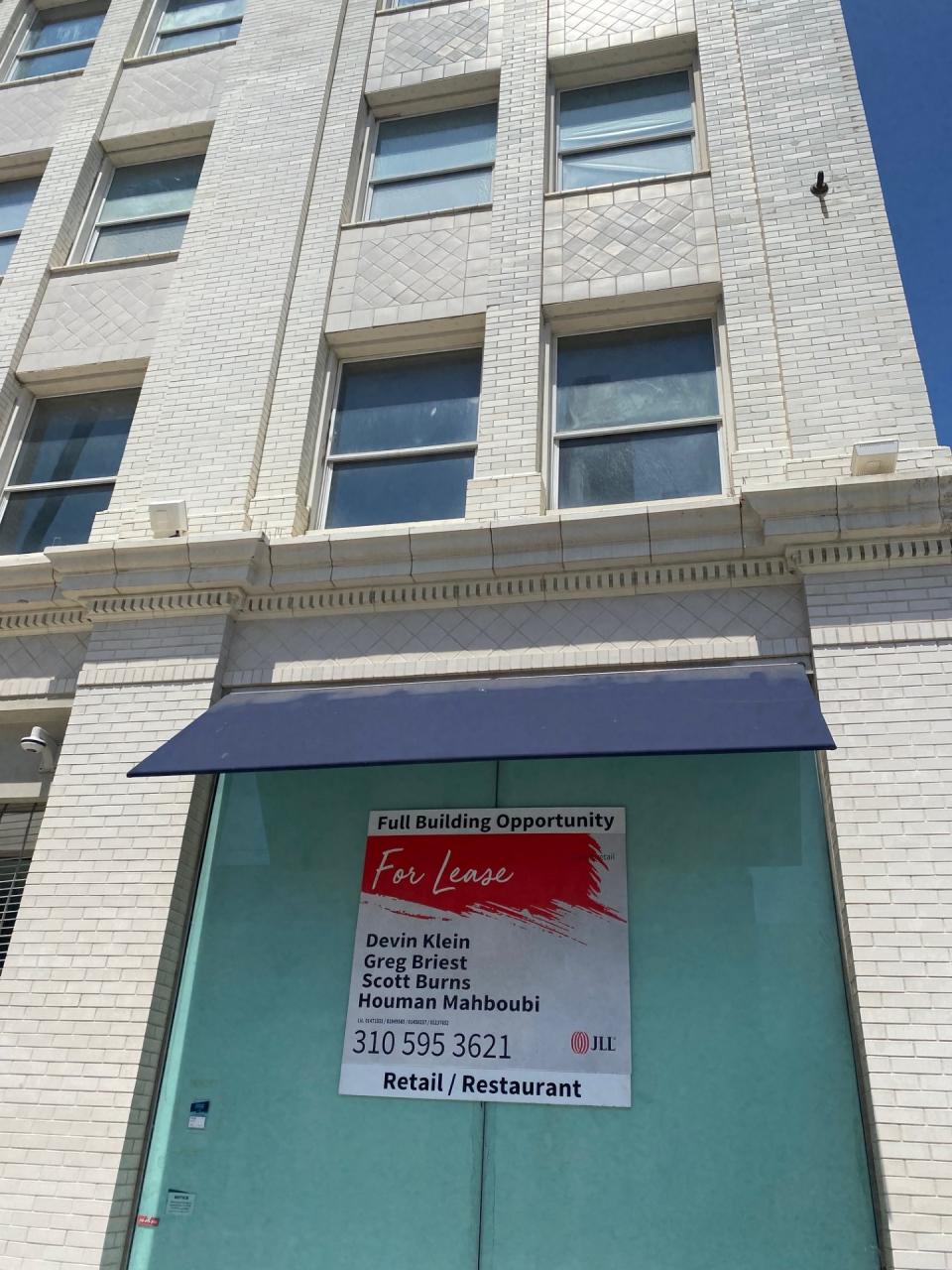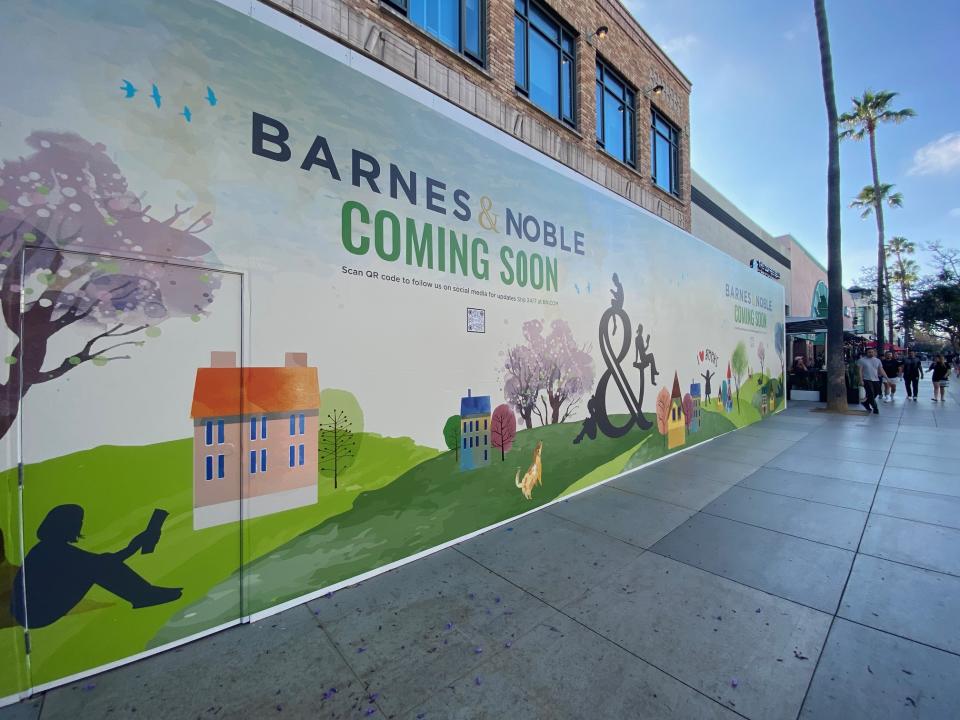Third Street Promenade in Southern California Works to Get Its Mojo Back

In the world of retail, the mantra for success is location, location, location.
But that formula hasn’t been working too well for the Third Street Promenade, the breezy seaside pedestrian shopping mall in affluent Santa Monica, California, where a modest home sells for $1.6 million and the average annual household income is $158,000.
More from WWD
AEO Foundation Golf Event Raises $900,000 for Nonprofit Groups
Phipps Marks L.A. Move With Big Sky Movie Ranch Fall Runway Show
Over the past few years, the three-block-long walkway that exploded with shoppers and tourists when it was redeveloped in 1989 has gone from boom to bust after a series of events altered retail everywhere. Now the problem is how to fix it.
The promenade’s decline began around 2005 to 2007 when it seemed the entire shopping community discovered e-commerce and Amazon trucks became a force of their own crisscrossing city streets. Then the Great Recession took hold in 2008 and chipped away at retail sales across the country.
But what really sent a crushing blow to the pedestrian promenade lined with purple jacaranda trees was the COVID-19 pandemic, at its worst in 2020. Soon retail outposts and restaurants were shuttering their doors right and left, and retail vacancies in July stood at 25.5 percent compared to 17.7 percent at the beginning of 2020.
A 45,000-square-foot Banana Republic flagship, once one of the fleet’s shiniest stores, ceased operations in 2021. An Old Navy store on the same block threw in the towel the same year. The vacancy rate on this one block now stands at 34.6 percent, according to Downtown Santa Monica Inc., the private nonprofit that manages the area.
One block down, a 35,0000-square-foot Gap store closed almost two years ago and is still vacant. Across the street from the Gap is the former Trastevere restaurant that packed it up in 2020 and was once one of the best eateries on the street. The vacancy rate in this section of the promenade is 23 percent. And then one block down, in a section with a big Lululemon store, 22 percent of the stores are vacant.

“I would say it really can’t get much worse, vacancy-wise,” said Michael Lushing, the president of Lushing Realty Advisors, who for decades has worked with promenade property owners to lease their spaces.
Currently, retail rents are about $120 a square foot per year, real estate experts said. That is a 66 percent decline from the promenade’s high point of activity in the mid-2000s. But other retail experts said some rents are even lower, being set at 15 percent of store sales plus a share of utilities because property owners are desperate to have their buildings occupied rather than be targets for vandalism.
Bargain rents have kept several prominent retailers on the promenade.
Anthropologie still attracts a large crowd to its mammoth two-story location to shop its boho collection of clothing and housewares. Urban Outfitters occupies 16,000 square feet of space and sets the casual tone for tourists looking to outfit themselves in California cool.
Beachwear-centric stores include Tillys, PacSun, and Sand ‘n Surf. Victoria’s Secret and Sephora keep up the beauty vibe, and an Apple store has been on the promenade for years.
City officials and real estate experts maintain the retail flight from the Third Street Promenade is no different from that at many retail centers in the United States, which are now faced with reinventing themselves with different tenants.
But the promenade’s three blocks have their own special set of circumstances. Many of the retail buildings are old, and they are huge. One building on the walkway is 50 feet wide and 150 feet deep, making it difficult to cut up into smaller spaces because stores end up not using the back half. “There’s no shortage of people who want 3,000 square feet but not 35,000 square feet,” Lushing said.
And then there are the unhoused residents who make their way to the promenade and the surrounding area. Santa Monica has been referred to as “the home of the homeless,” going back decades. But things declined further as unhoused numbers rose during the COVID-19 pandemic.
Six years ago, a light-rail train route was completed from downtown Los Angeles to Santa Monica, becoming a sort of midnight special for a growing number of individuals looking to sleep on the beach.
Since the COVID-19 pandemic, the Metropolitan Transportation Authority of Los Angeles, which operates the train, has become lax about checking tickets. “Why is this the only train I have ever seen in my life where you don’t have to pay to ride it?” asked Barbara Tenzer, who established Tenzer Commercial Brokerage Group in 1989 in Santa Monica and was a partner in the Trastevere restaurant. “Santa Monica is the last stop on the train, and it drops off 60 to 80 people at night who say, ‘Let’s go sleep in Santa Monica.’”
“Santa Monica IS NOT Safe.”
Santa Monica Coalition
Unhoused residents on the promenade have always been an issue because the pedestrian thoroughfare occupies closed-off city streets considered public spaces. It is hard to move people from public spaces versus private areas.
Activists who want the city to do more to keep the promenade safe have taken to posting to social media photos of individuals passed out in the nearby parking lot elevators or sleeping in store doorways. More acute are the number of people camped out a few blocks away at a long park-like bluff overlooking the ocean where Los Angeles County passes out free clean needles to drug users.
In response, the Santa Monica City Council in February proclaimed a local emergency to get more funds to address the vagrancy issue. According to city data, the number of calls regarding encampments has increased 15 percent from more than 1,500 in 2021 to nearly 1,900 in 2022. The unhoused resident population totals 926 people, up 15 percent over last year, according to a recent government survey.
Unhoused residents are just one element discouraging shoppers. Crime is another issue. In December, a group of homeowners, business owners and locals, called the Santa Monica Coalition, draped a large, colorful banner on the promenade that reads, “Santa Monica IS NOT Safe.” The statement refers to the number of unhoused, as well as to retail robberies that have taken place in recent years.
Ironically, last weekend a city council person reportedly was attacked in front of the sign as he admonished an unhoused resident for removing a QR-embedded piece of paper on the sign and throwing it on the ground, said John Alle, the coalition’s cofounder and a promenade property owner with three properties, two of which are vacant.
Safety is one of the most pressing issues. Alle claims that every week there are scores of walk-in-and-grab store robberies taking place that business owners don’t report because they don’t want their insurance costs to increase or police arrive too late to do anything. “We did a recent survey, and the tenants on the promenade report 12 to 45 thefts a week per store,” the coalition cofounder said.
City officials and business owners are taking steps to resolve these problems and revive the promenade’s heyday when tourists and local residents packed the place, and street performers and restaurants kept the scene lively.
Santa Monica Mayor Gleam Davis said the city’s voters overwhelmingly approved a measure in November to increase the hotel tax by 1 percent to generate $4.1 million a year to improve 911 response times, neighborhood police protection, address problems with unhoused residents and take care of other security concerns. Six new police officers have been added this year to the Santa Monica Police Department, but more are needed, business owners said.
A new annual $1.7 million program is likely to be approved to hire about 12 people from Covered Six, a private security firm that has worked since 2020 with retailers in Beverly Hills. “Once this is approved soon [by the City Council], we can deploy them on September 1,” said Andrew Thomas, chief executive of Downtown Santa Monica Inc. “They will be a visible presence and deterrent to crime and respond to calls from the business community. They will not respond to 911 calls, which will be handled by the police.”
The city is also taking several steps to facilitate doing business on the promenade. Zoning codes are being changed to accommodate restaurants and different ventures.
“We are trying to do everything we can to grease the skids for folks who do want to invest in Santa Monica,” the mayor said. “For example, we made our code more permissive to allow a high-end tattoo parlor on the promenade. We are trying to address service businesses.”
The city has changed restaurant requirements on the promenade to attract more fast-casual restaurants, which would add to the depleted number of eateries that disappeared during the pandemic.
The most vacant block on the promenade might be designated an arts and entertainment zone where outdoor dining could be expanded and there would be more zoning variations.
Little by little, things are improving as tourists and office workers trickle back to the area.
In May, Wilson Sporting Goods opened a 4,500-square-foot store, its first outpost outside of Chicago and New York. Erin Pelton, director of North American Retail Stores for Wilson, said the company selected the promenade because it wanted to be in a prime spot for athletes and where people can come together.
“We are three blocks from the beach. We have sports happening all around us. There are public tennis courts and clubs. This really is the ideal location,” Pelton said.
In June, a high-end John Reed fitness center opened inside the 45,000 square feet of the former Banana Republic flagship. To show how retail changes, this was a former JCPenney store, which closed in 1998 after operating there for 73 years.

This month, Barnes & Noble, which had been on the promenade until 2018, announced it is returning with a smaller venue that will be on the same block as the Wilson outpost. Barnes & Noble’s previous 30,000-square-foot promenade location, where the store had been for more than 20 years, remains vacant.
At the base of the promenade is Santa Monica Place, a Frank Gehry-designed shopping mall that opened in 1980 and was purchased in 1999 by Macerich, a real estate investment trust. At one time, this three-story center was anchored by two major department stores — Macy’s and Robinsons-May.
Those department stores left years ago and were replaced by Nordstrom and Bloomingdale’s. Two years ago, Bloomingdale’s left its 100,000-square-foot space encompassing two floors. That only compounded the vacancy problem started when ArcLight Cinemas closed its 12 movie screens in 2020.
Santa Monica Place, like many malls across the country, has had to look beyond retail stores for commercial success. Yet it is still home to several high-end retailers including AllSaints, Coach, Tiffany & Co. and Louis Vuitton.
The ArcLight Cinemas space that once covered 48,000 square feet will be replaced by the immersive Arte Museum next year. Next door to the museum will be a super spacious Din Tai Fung restaurant, a branch of the Taiwanese chain that serves dumplings and other Chinese fare.
And just announced in the last few days is a high-end fitness center called Club Studio, which will be taking the Bloomingdale’s ground-floor area. The department store’s second floor may be getting a separate tenant soon, according to Macerich.
While stores and businesses are coming back to the once-popular shopping area, the promenade’s glory days are still looming. “It’s going to take a while before we see any effects from what is being done,” said real estate agent Michael Lushing, who has spent the last five years trying to find a tenant for the old Barnes & Noble space with three floors. “I expect that in two or three years you will see a better promenade.”
Best of WWD

